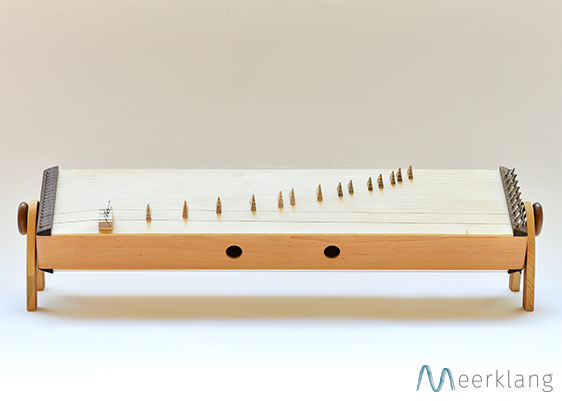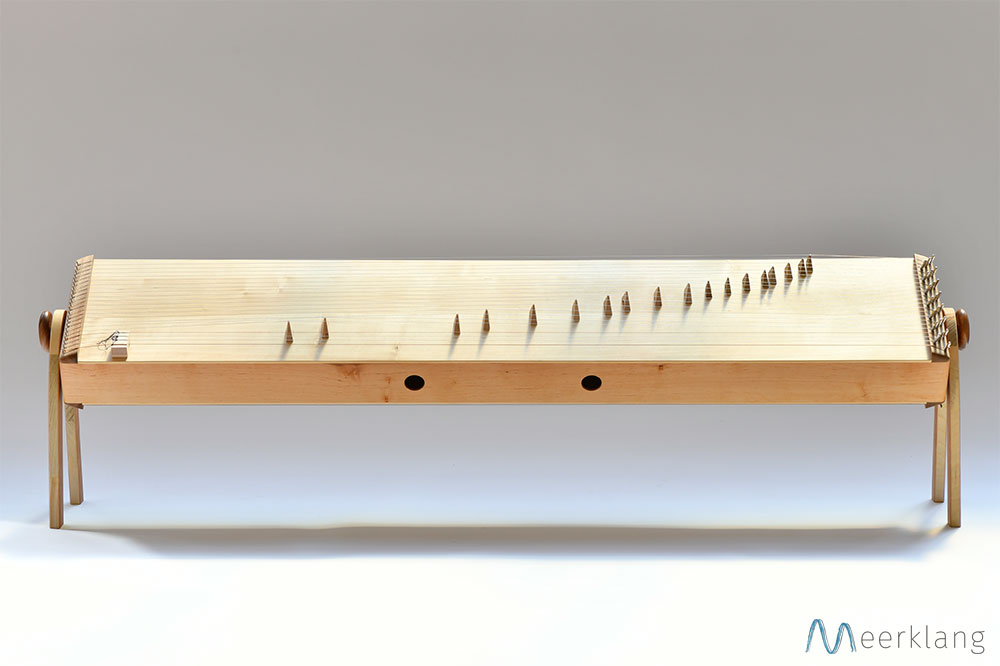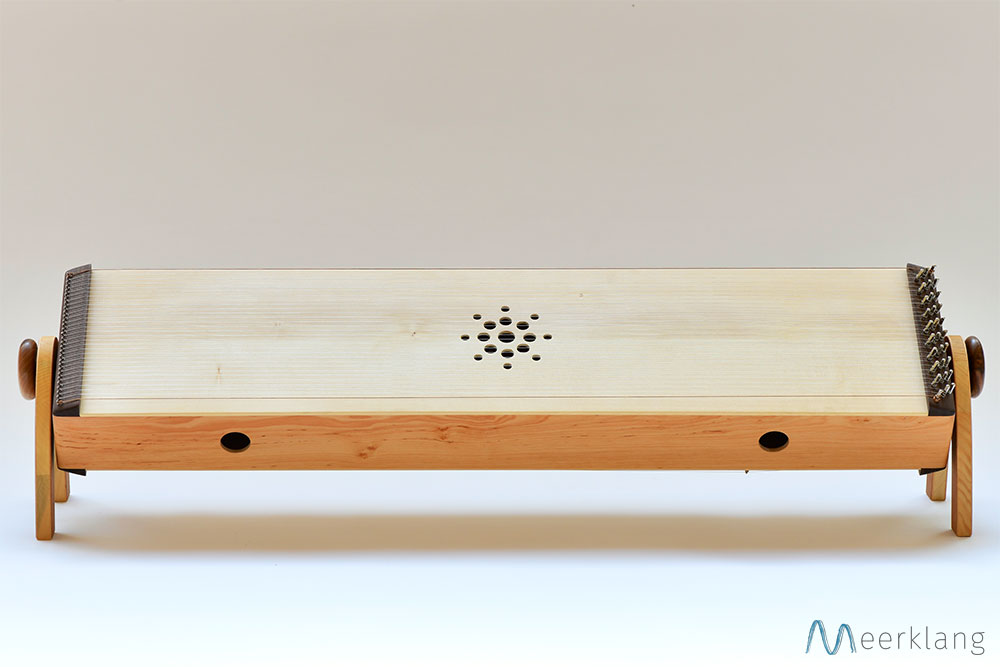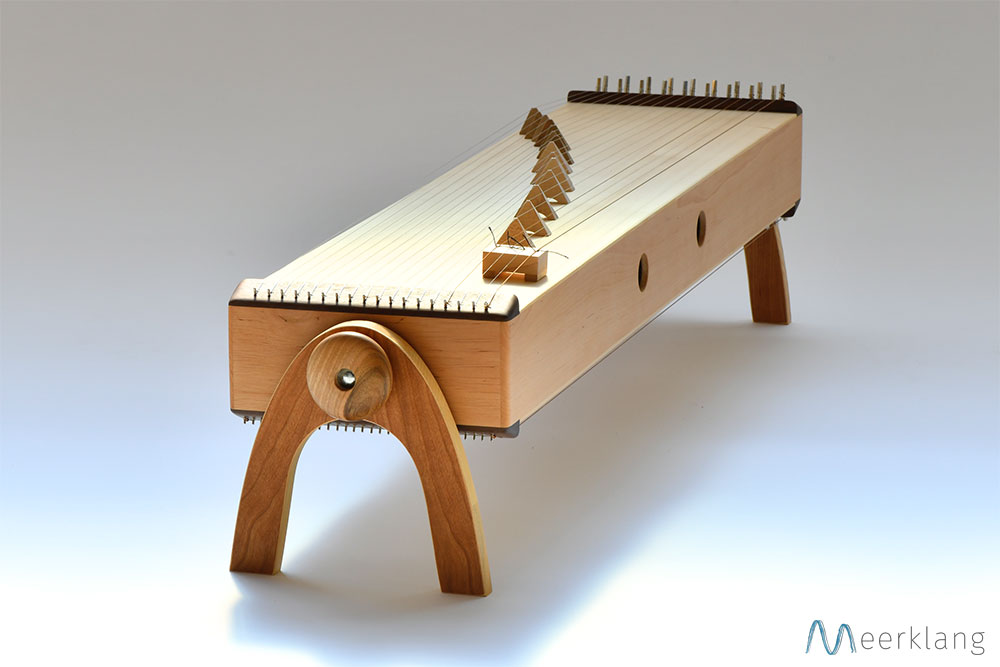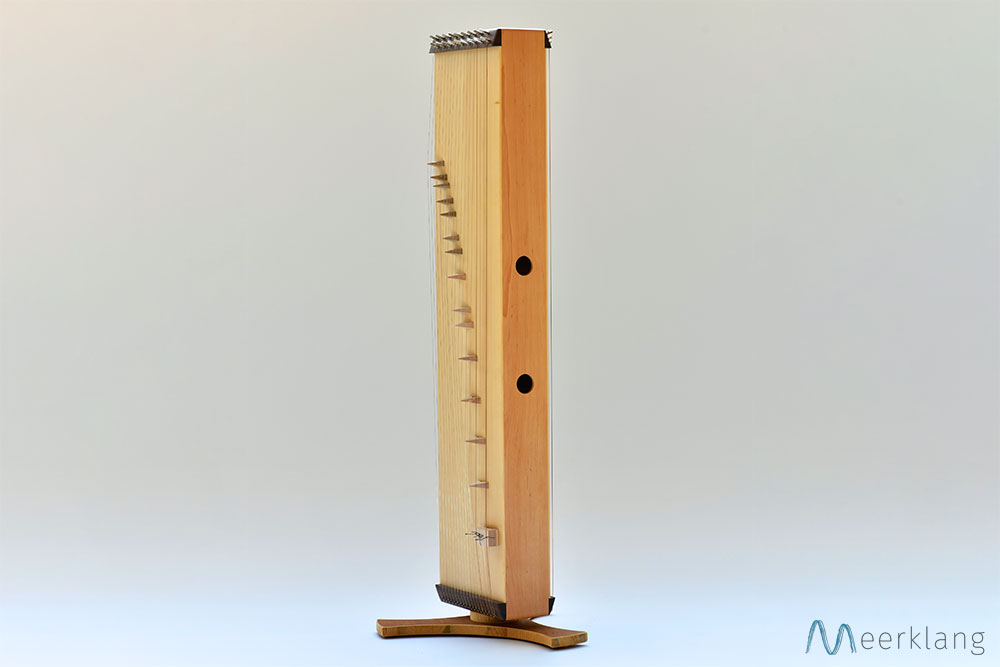Kotamo
Master of Improvisation
The Ko-ta-mo is a mix of three different instruments: koto, tambura and monochord. The monochord goes back to Pythagoras and is thus of European origin, the tambura is an Indian accompanying instrument and the koto is a Japanese melody instrument.
The way of playing is relatively simple. From the first moment you can lure very beautiful sounds from the instrument.
Of course, the kotamo can also be combined with classical instruments such as guitar or violin, which often creates completely new sound spaces and ideas.
Sound
The monochord is on one side of the instrument, the koto and tambura on the other. When you run your fingers over the monochord side, where all the strings are tuned to one note, a sound develops which is at the same time very wide open and full of overtones and yet surprisingly deep. It’s fascinating to experience that although all the strings are tuned to one note, a whole spectrum of other notes (overtones) can be heard. On the acoustic level through the monochord you experience that all tones are contained within one tone.
On the other string level is the tambura (4 strings) the koto with 18-22 strings depending on the width. The tambura is tuned to the same tone as the monochord and also has a string in fifth tuning. The four strings run over a “snare bridge” that creates the typical whirring and mystical sound that is also known from the Indian sitar. The strings of the koto can be tuned as desired using sliding wooden riders. This means you can experiment with very different scales and experience moods in the truest sense of the word. Diatonic, pentatonic, Indian or Japanese tunings can be set, just as you like. Or you can build the riders intuitively and find out what mood you are in at the moment.
Way of playing
The three instruments can be played at the same time, which makes a wonderful combined sound. You can play the root note with your left hand on the tambura and monochord and play a melody with your right hand on the koto. If you tune the koto so that all the notes harmonize with the root note, you can improvise freely without thinking at all.
Applications
Versions
The Kotamo comes standard in three different lengths and two widths. The Kotamo is also available in an arched version in three sizes.
| Version | Length | Width | Height | Tuning | String count |
|---|---|---|---|---|---|
| Standard | 106 cm | 24 cm | 10 cm | D | 48 |
| Standard | 126 cm | 24 cm | 10 cm | C | 48 |
| Standard | 155 cm | 24 cm | 10 cm | A | 43 |
| Standard | 106 cm | 30 cm | 10 cm | D | 58 |
| Standard | 126 cm | 30 cm | 10 cm | C | 58 |
| Standard | 155 cm | 30 cm | 10 cm | A | 53 |
| Arched | 106 cm | 31 cm | 8 cm | E | 58 |
| Arched | 126 cm | 31 cm | 8 cm | C | 58 |
| Arched | 155 cm | 31 cm | 8 cm | A | 53 |
Of course, if you want to order the instrument in other dimensions, this is also possible. Please get in contact with us.

